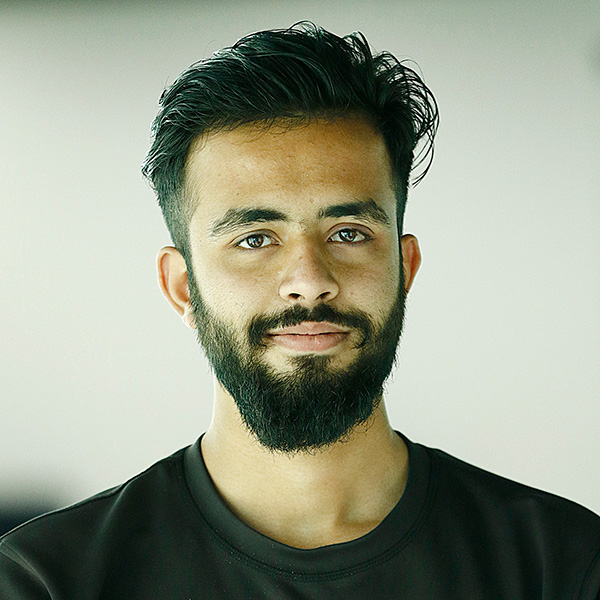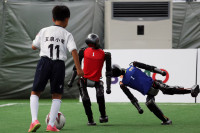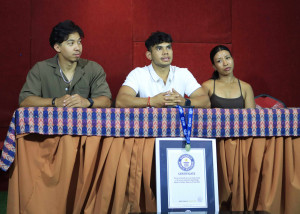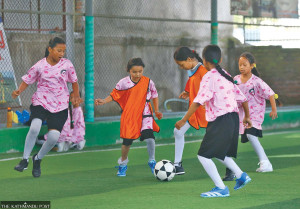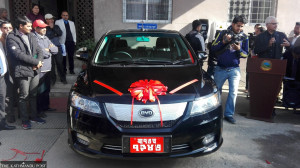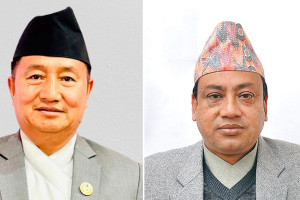Sports
For Nepal, Global Chess is no child’s play
With its ancient roots and ingrained culture, Nepali chess strives for structured training and global recognition. Making this effort are academies and a new generation of players.
Nayak Paudel
Chess is among the oldest games in the world, with its roots dating back at least 1,475 years.
“According to the majority of researches, the history of chess begins in Northern India, on the banks of the Ganges, in the town of Kannauj, during the reign of Sharvavarman (550 AD),” the International Chess Federation (FIDE) mentions on its online museum.
Then, called ‘chatrang,’ the game, within two decades, expanded up to Persia, present-day Iran. The king, queen, and their army of pawns, elephants, camels and horses—the chess pieces—journeyed to different parts of the world as the game spread. It became ‘shatranj’ among the Arabs during the seventh century before entering Europe in the ninth century. Today, there are over 2,000 identifiable variants of the game.
Chess’s swift spread from Kannauj raises the question of when it reached Nepal’s lowlands. Nepalgunj, a city along Nepal’s southern border with India, is only 250 km from Kannauj. But Nepal’s chess officials have a different story, one that challenges FIDE’s account.
“Chess is also believed to have originated in the present-day Saptari district of Nepal,” said Herakaji Maharjan, president of the Nepal Chess Federation (NCF). “The Russians support this theory. They encourage us to promote it, but we have not succeeded much.” Nepal’s Saptari and India’s Kannauj are around 800 km apart.
While concrete historical records of chess in Nepal are scarce, its early presence remains a strong possibility. Maharjan says, “After the fall of the Rana regime, chess started entering local households and roadside shops and gatherings.”
Nepal’s passion for chess
On Tuesdays, Shanishchare Bazar, which is located between wards 4 and 9 of Pathari Shanishchare Municipality in Morang district, remains silent as it is a weekly market holiday.
However, around 100 metres south of the main chowk, Shishir Khaja Ghar, an eatery in ward 9, buzzes with carrom players. A few metres away, there is a quieter but equally focussed group of senior chess enthusiasts.
“Those who play carrom are not regulars. They play for a month or two and disappear,” said Samir Raut, a youngster who helps his mother in the eatery. “But the elders, the same faces, have been playing chess regularly for as long as I can remember.”
One of them is 60-year-old vet Thaneshwar Bhattarai, who is rarely seen without a chessboard when he is free. It has been almost half a century since Bhattarai first touched the chess set, in the hills of Taplejung district during the late 1970s.
“I first became acquainted with chess around 1978 or 1979, when our senior cousin brother brought it from a school training in Ilam,” Bhattarai shared over a video call with the Post. And when he migrated to Shanishchare in 1992 from Phulbari Village Development Committee in Taplejung, he brought his love for the game with him.

“Nepal has embraced chess at every stage of life. It appeals to both the young and the old,” said Maharjan, adding, it is common to see people playing chess along the roadside of Nepal. “There is not a single district in the country without chess players.”
Despite its proximity to chess’s origin, Nepali stakeholders acknowledge that the country struggles to develop international standard players. NCF President Maharjan notes many casual players but few professionals.
However, the progress made by Nepal in chess during recent times is also not to be overlooked.
Modern Nepal’s first national championship, for men, took place in 1979, but women had to wait until 2008. Over the years, the winners, in both categories, have come from some of the remotest to the biggest cities in Nepal.
“Women’s participation in the national championship suggests Nepal has started accepting women as professional chess players. However, with not many male players showing an interest in competing against females, it also showed that female players were not counted as equal to their male counterparts,” Monalisha Khamboo, winner of the inaugural national women’s championship in 2008, told the Post.
“There is a huge difference in the performance of male and female athletes in physical sports like football, cricket and volleyball,” said Khamboo, who has been running Himalayan Chess Academy (HCA) in Thapathali, Kathmandu, for just over a year. “Chess is a mental game. Female chess players are as capable; all they need is to be accepted as equals by the world.”
On the path to modern chess
“I came to Kathmandu in 2002/2003 to help organise probably the first international-level chess championship of Nepal,” India’s Atanu Lahiri, who was in Kathmandu until last week, told the Post. “Despite chess being played in Kathmandu, the concept of international ratings was largely unknown to the players,” he said, with a sip of his coffee.
Lahiri, a FIDE International Master and the 1999 Commonwealth chess champion, is one of the witnesses of how chess has advanced in his neighbouring Nepal. He was also Nepal’s national coach for a year in 2005.
“Now, after two decades, the scenario has completely changed here [Kathmandu],” Lahiri, whose recent visit was to lead a Training of Trainers (TOT) organised by the HCA.
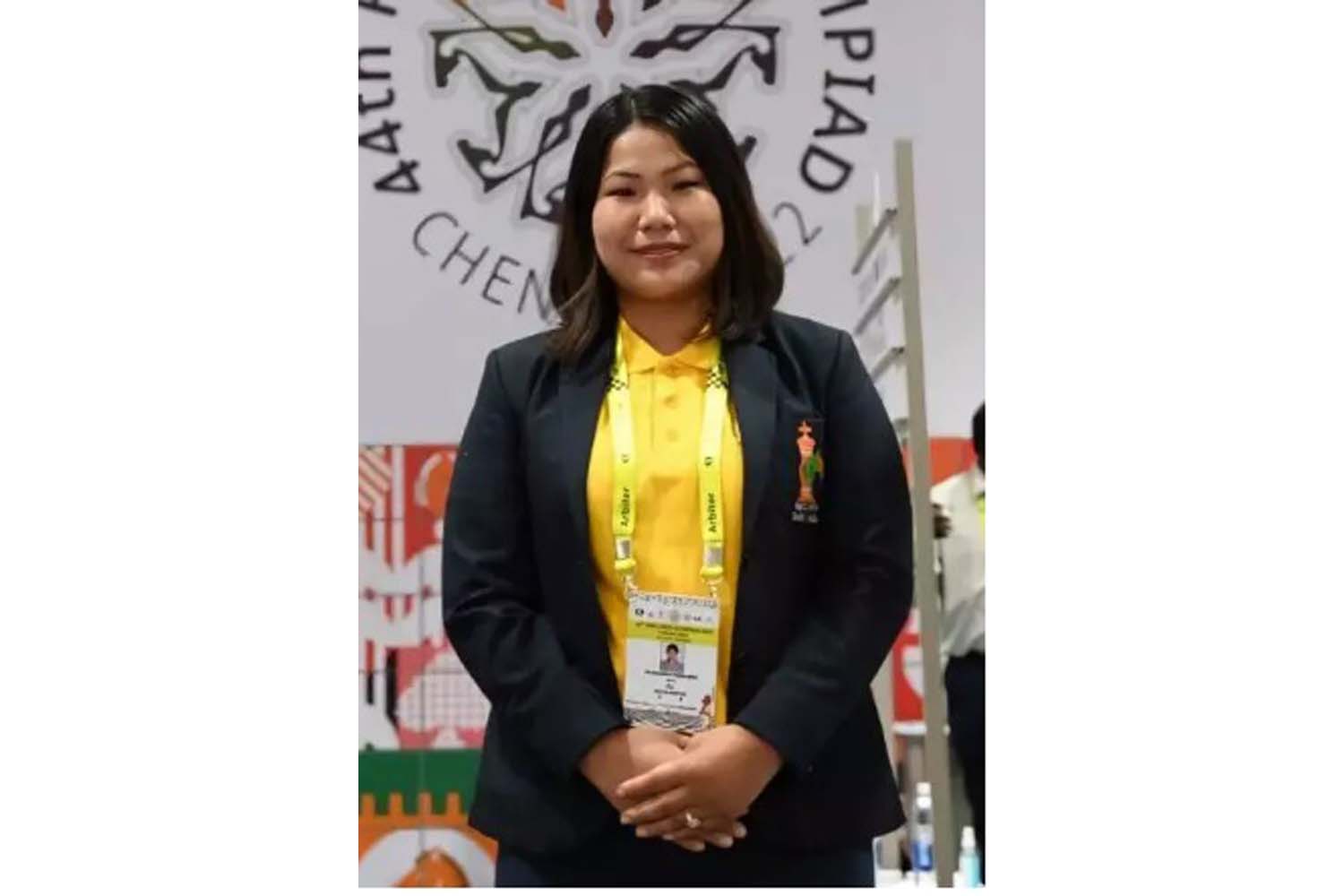
“Irrespective of the rate of progress, wherever chess is played, development of the game as well as the human mind is inevitable,” said Lahiri, who has also authored a book titled ‘Art of Thinking: Insights from a Chess Master’.
The noticeable progress in Nepali chess has senior players optimistic about a significant leap forward soon.
Initially, HCA founder Khamboo encountered parental skepticism about the need for chess theory, with many believing basic knowledge sufficed. “Now,” she shares, “parents are actively seeking to enroll their children.” Chess academies typically use tiered levels to facilitate systematic learning.
Mathematically, there are more possible games of chess than there are atoms in the observable universe. And yet, checkmate is possible in just two moves.
“I learned chess when it became more accessible. By then, I was already a ‘player’, but had so much new to learn,” Maharjan informed. “But in chess, a prodigy with the right instincts can beat someone with years of experience.”
One such prodigy is Isha Giri, who was born in 2014 in Nepalgunj. She finished third in the 10th National Women’s Chess Championship in January. “She bested several senior players in the open category,” Maharjan shared with joy. “However, due to lack of resources, we cannot retain such players, train them professionally from an early age and challenge the world heavyweights.”
Maharjan notes that support from local governments, clubs, and the private sector enables tournaments worth Rs40-50 million annually, indicating a positive trend driven by ownership and sponsorship of the game by local bodies and educational institutions. Or else, the NCF receives only Rs300,000 a year from the Nepal Sports Council, the country’s sports-governing body.
The organisation of chess tournaments outside Kathmandu has been a source of inspiration. Bhattarai, the veteran from Shanishchare, highlights his municipality's FIDE-rated events, which bring elite players to his locality, profoundly impacting local youth and schools. Beyond striving for personal improvement, Bhattarai cherishes chess for its peaceful and social aspects in his later years.
Believe in chess
Bhattarai got the chance to learn chess in the remote Phulbari village in Eastern Nepal. “I found there were several benefits of playing chess, such as understanding the importance of planning, improving cognitive skills, and so I also taught it to my children since their early childhood,” Bhattarai said.
Chess stakeholders argue that once a child starts playing the strategic game, the parents are sure to see positive changes in them.
“My son learned chess from his grandfather, and by the time he was six, no one in the family could beat him,” Dr Bhawana Amatya, a general practitioner at CIWEC Hospital, told the Post over the phone. Thus, around six months ago, Dr Amatya took her son Subhanga Pradhan to the HCA.
“In the early days, he lost to his friends in the academy,” Dr Amatya shared. “But slowly, he focused and improved. His social skills were enhanced while his memory got sharper.”
While acknowledging the benefits of chess for her son, Dr Amatya sees limited professional opportunities in Nepal, making her reluctant to encourage that path. Nevertheless, she expects him to continue playing recreationally, with a potential for more if the national chess scene improves.
Chess stakeholders have a strong belief that the game would not be popular and successful unless the parents start supporting the new generation.
“As we all know, India is currently a heavyweight in world chess,” said Lahiri, who has been teaching chess among the indigenous communities throughout India.
He added, “If we look at the active representatives in Indian chess, most are youths, and even teenagers, with the majority coming from middle-class families and below.”
India’s Gukesh Dommaraju, in 2019, became the world’s second youngest Grandmaster, FIDE’s highest rank for a chess player, at the age of 12. He missed the chance to be the youngest by a mere 17 days. But in 2024, Gukesh, then 18, became the youngest world champion.
“We weren’t financially well-off, and my parents faced big struggles. At one point, in 2017 and 2018, we were so low on funds that my parents' friends had to sponsor me. They [my parents] even made lifestyle changes just so I could play in tournaments. Their sacrifices were immense,” Gukesh shared after becoming the world champ.
For its growth, NCF’s Maharjan believes Nepali parents need to view chess more positively, building on its inter-generational tradition.
HCA’s Khamboo highlights a remarkable one-year shift: from parental scepticism to active engagement and witnessing improvements in all children, including those with special needs. Emphasising ‘trust in the process’, Khamboo said, “The academy is now optimistic about producing champions.”
Nepal’s debut in the FIDE World Championship, which began in 1948, was only two editions ago, in 2023. Rupesh Jaiswal, Nepal’s youngest FIDE Master (FM) in history, at the age of 17, represented Nepal as the country’s national champion of the year.
“There are many prestigious chess tournaments held throughout the world, with handsome cash prizes and other honours,” Maharjan said. “Nepal is currently aiming to take part in Asian-level tournaments, compete as equals there, and enter the global stage.”




 21.53°C Kathmandu
21.53°C Kathmandu

